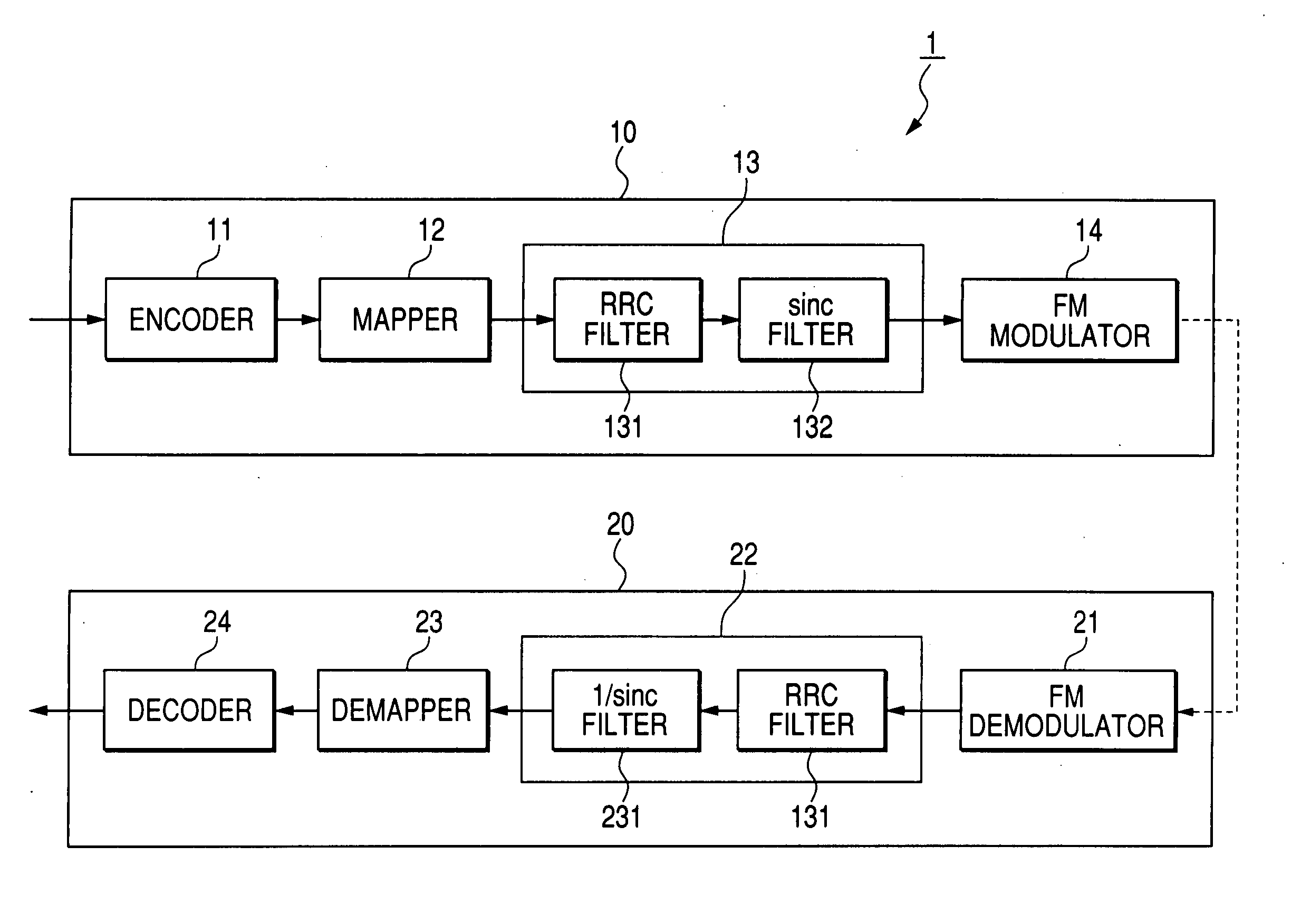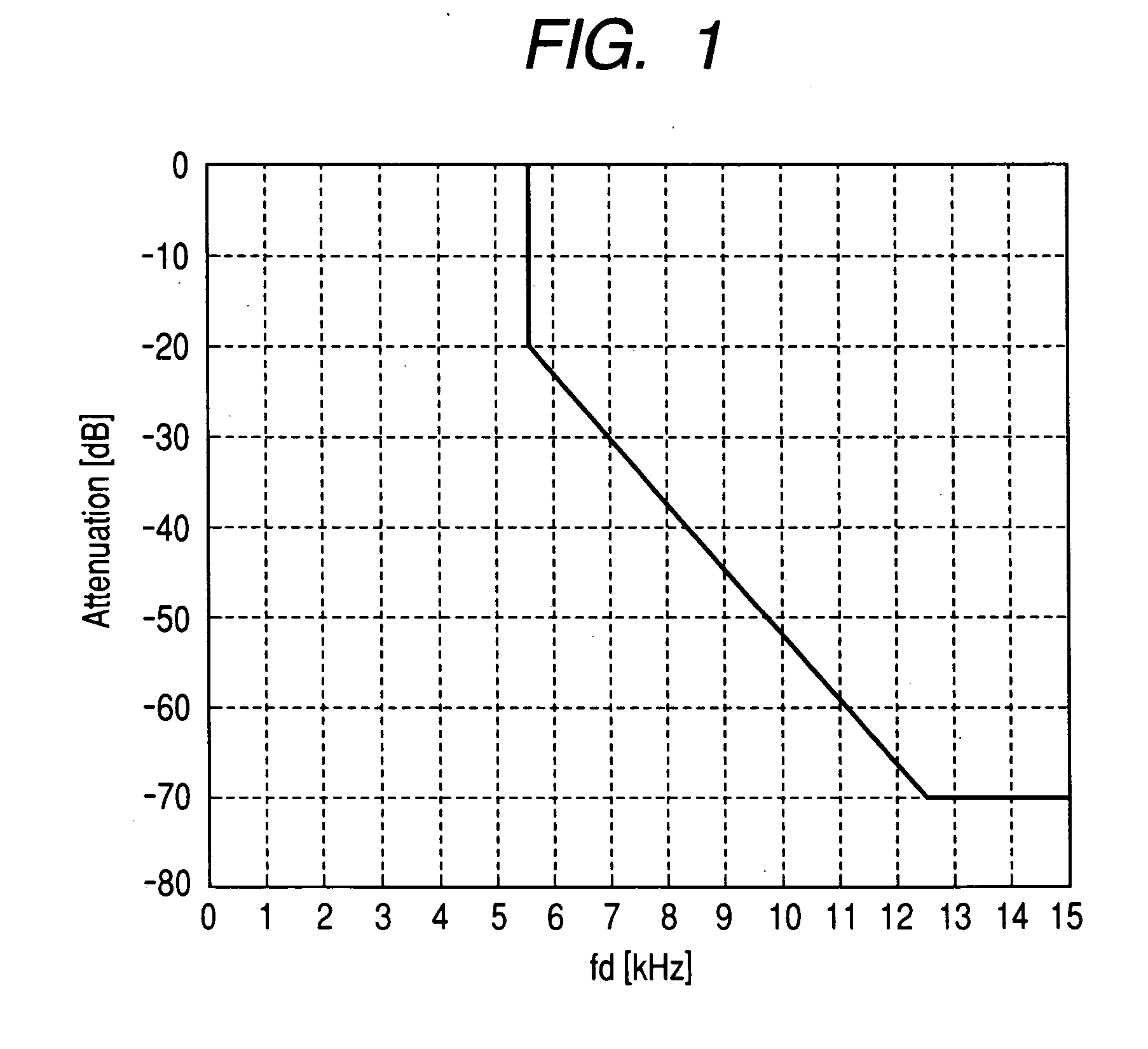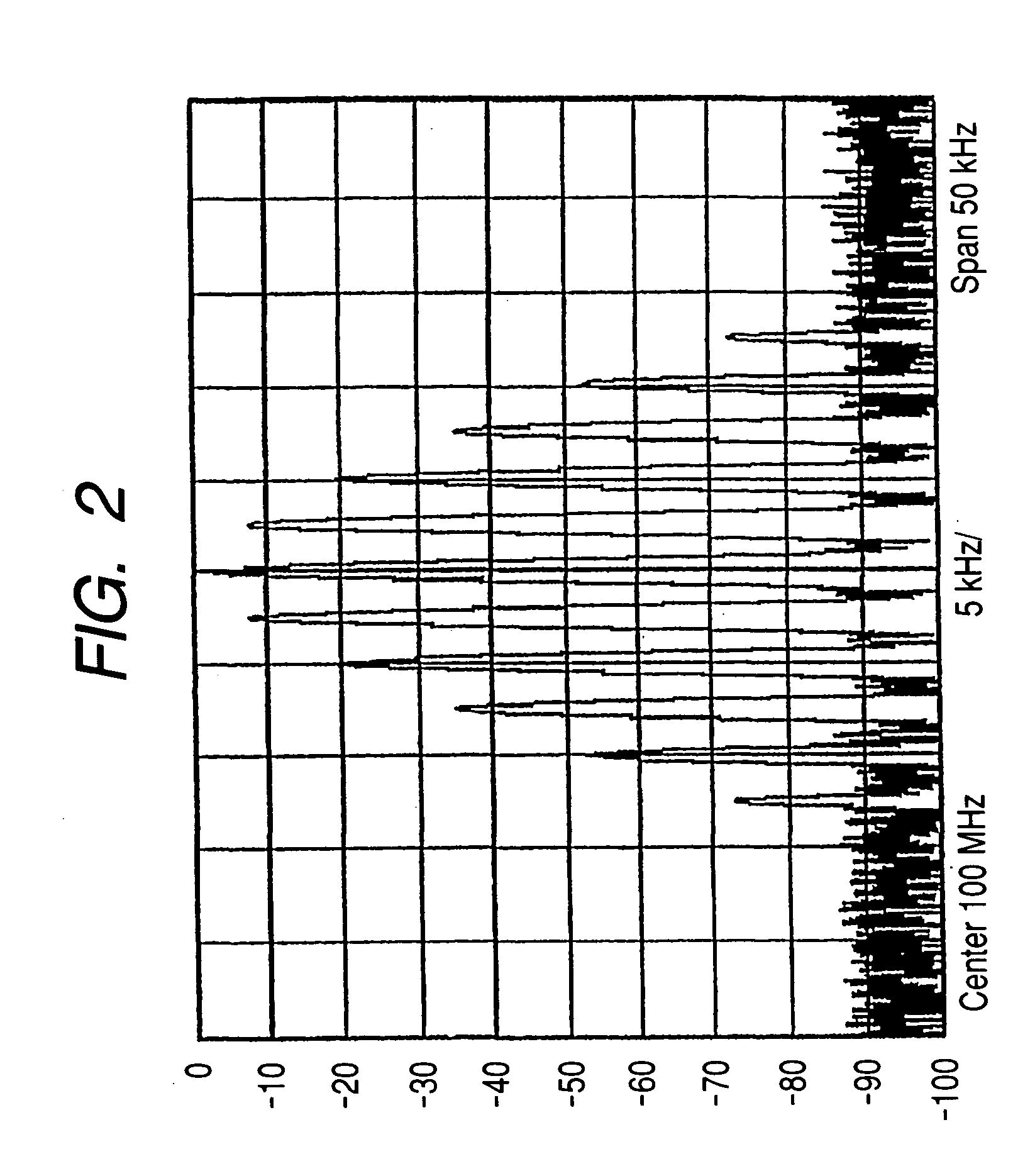Modulating apparatus, mobile communication system, modulating method, and communication method
a technology of modulating apparatus and mobile communication system, applied in the field of modulating apparatus, mobile communication system, modulating method, communication method, can solve the problems of extremely low spectrum efficiency of land mobile radio system in the united states, inability to use nonlinear power amplifiers in the present lmr system, and inability to solve the problems described below
- Summary
- Abstract
- Description
- Claims
- Application Information
AI Technical Summary
Benefits of technology
Problems solved by technology
Method used
Image
Examples
first embodiment
[0087] First, a transmission rate, a symbol rate, a base band filter, a modulation system, and a nominal frequency shift in the first embodiment are shown in Table 9 below.
TABLE 9Transmission Rate4800 bpsSymbol Rate2400 symbol / sBase Band FilterTransmission: A filter obtained bycombining a filter having a RootRaised Cosine characteristic withan arbitrary α and a filter havinga sinc function characteristicReception: A filter obtained bycombining a filter having a RootRaised Cosine characteristic withan arbitrary α and a filter havinga 1 / sinc function characteristicModulation SystemQuaternary FSK Modulation SystemNominal FrequencyArbitrary in ranges +3 = +913 Hz toShift+1057 Hz and −3 = −913 Hz to −1057 Hzwith respect to respective foursymbol levels (±3, ±1)+1 and −1 are shifts ⅓ of +3 and−3, respectively
[0088]FIG. 12 is a block diagram showing a constitution of a ground mobile communication system 1 according the first embodiment of the invention. The ground mobile communication sys...
second embodiment
[0116] A second embodiment will be explained. A transmission speed, a symbol rate, a base band filter, a modulation system, and a nominal frequency shift in the second embodiment are shown in Table 10 below.
TABLE 10Transmission Rate4800 bpsSymbol Rate2400 symbol / sBase Band FilterTransmission: A filter having aRoot Raised Cosine characteristicwith an arbitrary αReception: A filter having a RootRaised Cosine characteristic withan arbitrary αModulation SystemQuaternary FSK Modulation SystemNominal FrequencyArbitrary in ranges +3 = +581 Hz toShift+673 Hz and −3 = −581 Hz to −673 Hzwith respect to respective foursymbol levels (±3, ±1)+1 and −1 are shifts ⅓ of +3 and−3, respectively
[0117]FIG. 16 is a block diagram showing a constitution of a ground mobile communication system 2 according to the second embodiment of the invention. The ground mobile communication system 2 schematically includes a transmitting unit 30 and a receiving unit 40. Components identical with those in the first em...
PUM
 Login to View More
Login to View More Abstract
Description
Claims
Application Information
 Login to View More
Login to View More - R&D
- Intellectual Property
- Life Sciences
- Materials
- Tech Scout
- Unparalleled Data Quality
- Higher Quality Content
- 60% Fewer Hallucinations
Browse by: Latest US Patents, China's latest patents, Technical Efficacy Thesaurus, Application Domain, Technology Topic, Popular Technical Reports.
© 2025 PatSnap. All rights reserved.Legal|Privacy policy|Modern Slavery Act Transparency Statement|Sitemap|About US| Contact US: help@patsnap.com



